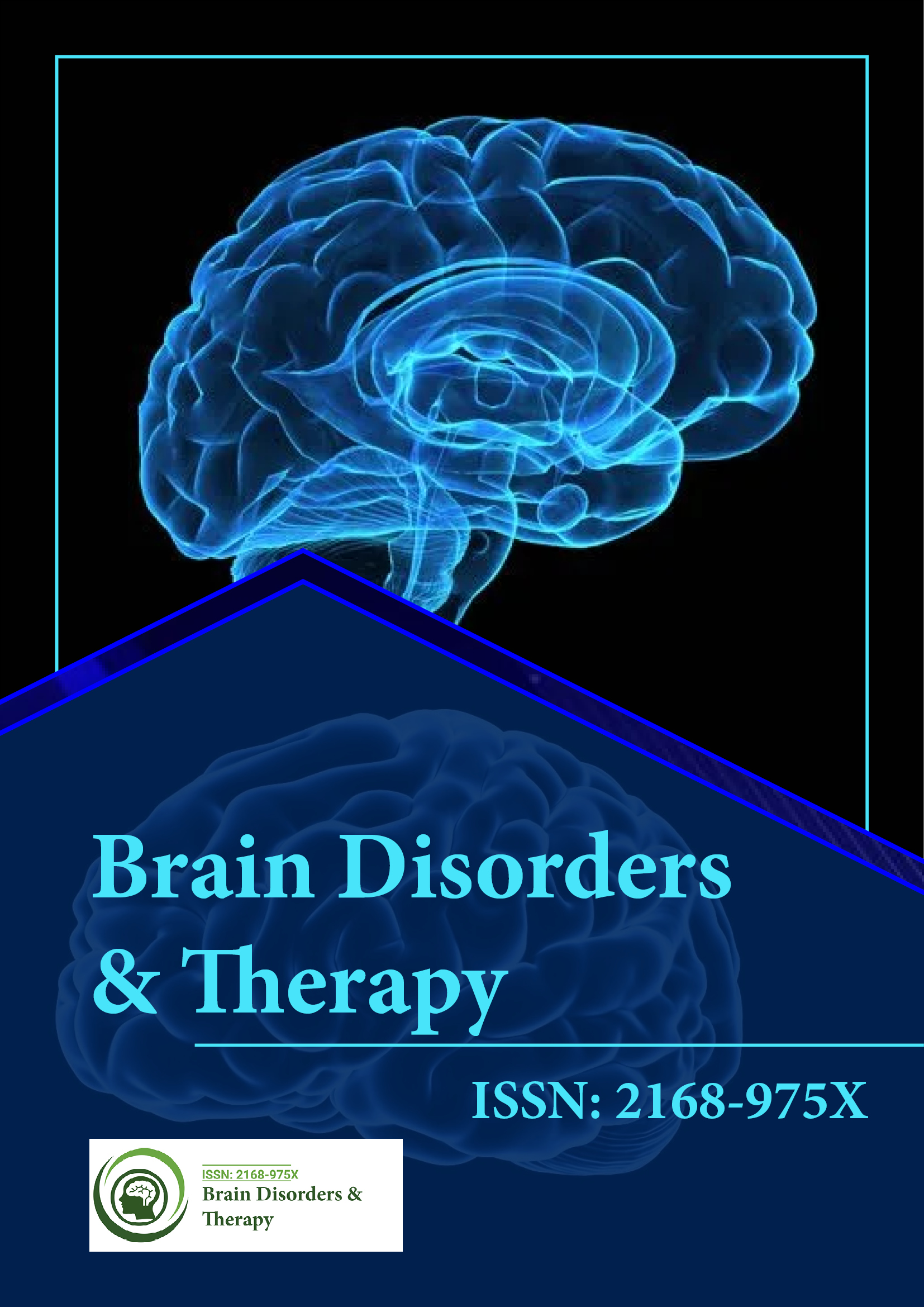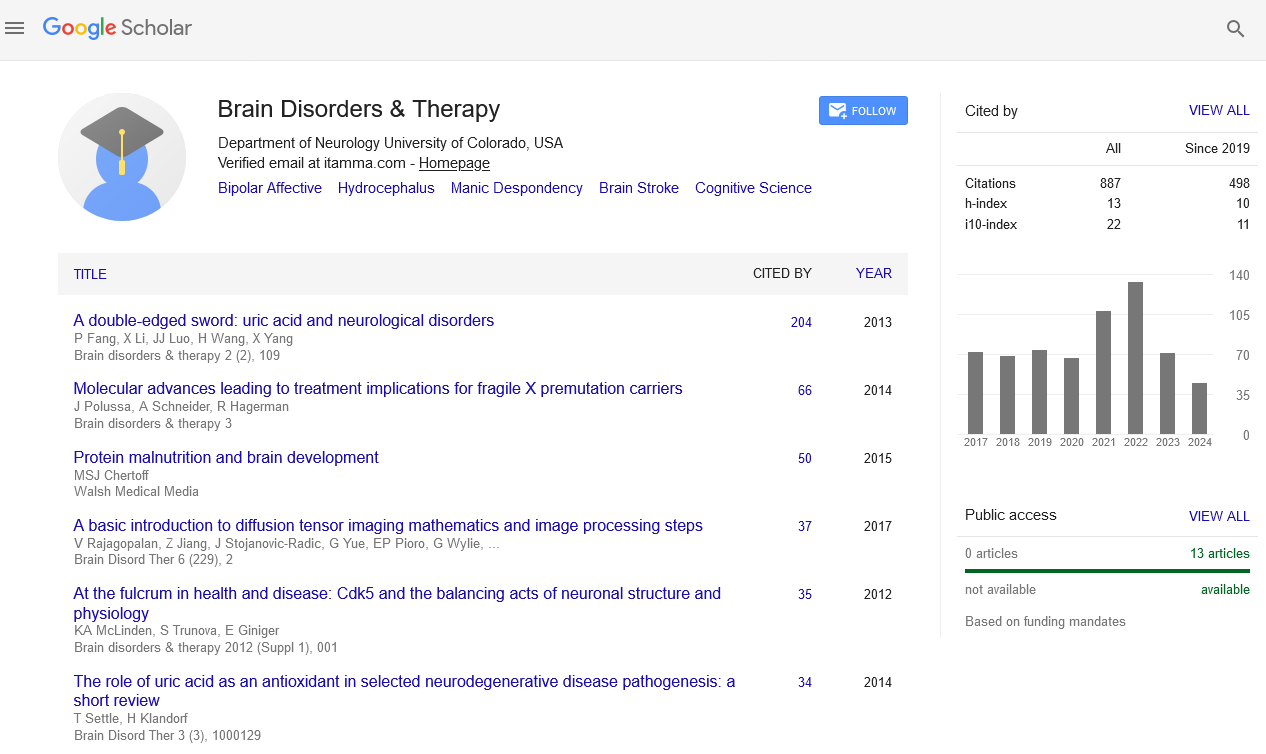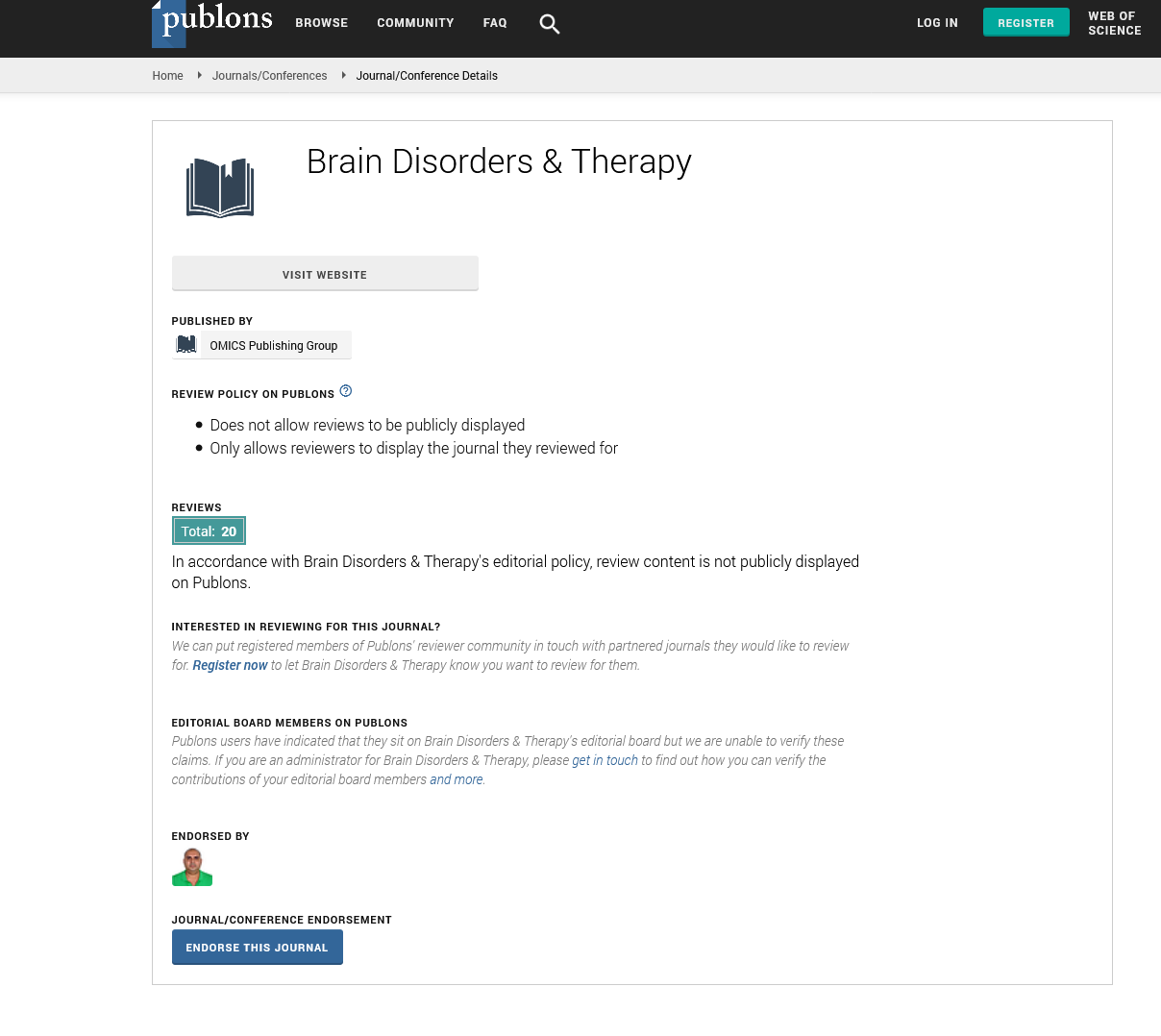Indexed In
- Open J Gate
- Genamics JournalSeek
- JournalTOCs
- RefSeek
- Hamdard University
- EBSCO A-Z
- OCLC- WorldCat
- Publons
- Geneva Foundation for Medical Education and Research
Useful Links
Share This Page
Journal Flyer

Open Access Journals
- Agri and Aquaculture
- Biochemistry
- Bioinformatics & Systems Biology
- Business & Management
- Chemistry
- Clinical Sciences
- Engineering
- Food & Nutrition
- General Science
- Genetics & Molecular Biology
- Immunology & Microbiology
- Medical Sciences
- Neuroscience & Psychology
- Nursing & Health Care
- Pharmaceutical Sciences
Opinion - (2025) Volume 14, Issue 2
Strategies for Reproducing Hippocampal Complexity Using Human Stem Cell Models
Yuan Geng*Received: 26-May-2025, Manuscript No. BDT-25-29725; Editor assigned: 28-May-2025, Pre QC No. BDT-25-29725; Reviewed: 11-Jun-2025, QC No. BDT-25-29725; Revised: 18-Jun-2025, Manuscript No. BDT-25-29725; Published: 25-Jun-2025, DOI: 10.35248/2168-975X.25.14.305
Description
The hippocampus, located in the medial temporal lobe, is essential for encoding episodic memory, spatial navigation and regulating emotional states. Its layered architecture and cellular diversity make it highly complex, presenting significant challenges for laboratory modeling. Rodent studies have provided valuable insights into hippocampal circuitry, yet cross-species differences limit their ability to fully capture human biology. Human Pluripotent Stem Cells (hPSCs), which include embryonic stem cells and induced pluripotent stem cells, now provide an unprecedented opportunity to recapitulate aspects of human hippocampal development. These models allow access to early neurogenesis, support patient-specific disease modeling and provide a human cellular context for pharmacological testing.
Developmental origins of the hippocampus
The hippocampus arises from the medial pallium of the embryonic dorsal telencephalon. During early development, morphogens such as WNTs, FGFs and BMPs establish molecular gradients that specify hippocampal progenitors. Subsequent neurogenesis generates the major hippocampal subregions, including the dentate gyrus, cornu ammonis fields and subiculum. Each contains distinct neuronal and glial populations with unique connectivity. Reproducing this complexity requires carefully tuned differentiation protocols that mimic embryonic signaling dynamics.
Three-dimensional organoid models
Advances in three-dimensional stem cell culture have produced organoids that mimic brain regions, including the hippocampus. Early organoids resembled forebrain cortex, but modifications in signaling inputs have led to hippocampus-enriched structures. Organoids patterned with WNT activation and sustained FGF2 exposure show increased representation of hippocampal progenitors and exhibit early subregional segregation resembling dentate gyrus and cornu ammonis domains. Despite their promise, organoids still face limitations, including variability between batches, incomplete maturation, limited synaptic connectivity and underrepresentation of glial populations. Additionally, the absence of vasculature and microenvironmental cues further distinguishes them from hippocampal tissue.
Functional assessment of derived neurons
Assessing the functionality of hPSC-derived hippocampal neurons is critical to validating their relevance. Electrophysiological profiling has shown that these neurons can generate action potentials, display excitatory postsynaptic currents and exhibit spontaneous network oscillations, though often at an immature stage. Evidence of dendritic spine formation, synaptic protein expression and short-term plasticity supports their hippocampal identity. However, achieving robust long-term potentiation, a defining feature of memory encoding, remains a challenge in most systems.
Advances in bioengineering approaches
The combination of stem cell biology with bioengineering has enhanced the sophistication of hippocampal models. Bioprinted scaffolds using biodegradable materials provide structural support for neuron alignment and axonal guidance, enabling the study of connectivity between hippocampal subregions. Organ-on-chip systems, based on microfluidics, permit dynamic control of the cellular microenvironment and allow co-culture with other brain regions or blood–brain barrier components. These approaches improve nutrient and oxygen delivery, enhance maturation and better replicate the mechanical and chemical signaling conditions.
Ethical and translational considerations
As hPSC-derived hippocampal models gain complexity, ethical concerns regarding their use in cognition-related research have become increasingly important. Guidelines are evolving to ensure responsible application, particularly concerning donor consent, potential cognitive attributes of advanced brain-like structures and transparency in experimental use. On the translational side, challenges include scaling production, ensuring reproducibility and defining quality standards for clinical relevance. Nevertheless, pharmaceutical industries are already employing these models to evaluate neurotoxicity and screen therapeutic candidates in a human-specific context.
Human pluripotent stem cell-derived hippocampal models represent a transformative platform for studying neurogenesis, circuit organization and neurological disease. While current limitations in maturation, connectivity and reproducibility remain, these systems provide valuable insights into processes underlying memory formation, developmental disorders and neurodegenerative conditions. Their integration with engineering technologies and ethical oversight will be key to advancing their utility in research and therapeutic discovery. Continued interdisciplinary collaboration promises to refine these models further, bridging the gap between experimental systems and human hippocampal biology.
Citation: Geng Y (2025). Strategies for Reproducing Hippocampal Complexity Using Human Stem Cell Models. Brain Disord Ther. 14:305.
Copyright: © 2025 Geng Y. This is an open-access article distributed under the terms of the Creative Commons Attribution License, which permits unrestricted use, distribution, and reproduction in any medium, provided the original author and source are credited.


